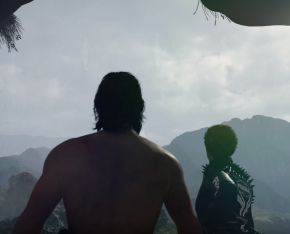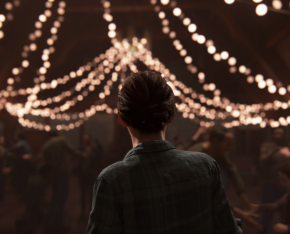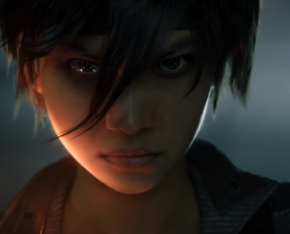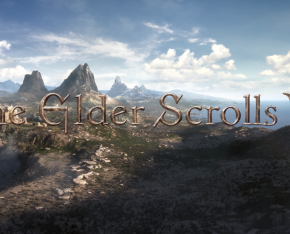By Anni Simpson on May 24, 2014 at 11:00am
When you enter the city of Cloudbank, you don’t know very much. You see the futuristic dystopia through the eyes of Red, a woman wielding a giant, robotic sword the size of her entire body. The disembodied voice of a man speaks to her as if you were the protagonist of noir film, explaining bits and pieces of your world as though you already know most of it.
Except that you don’t. You don’t know how to use the sword, what it is, or why the hell you’d need such a thing. Your disembodied ghost friend also doesn’t bother telling you why you’re on the run, why there are robots chasing you trying to kill you, or why you seem to have the power to stop time so you can pre-plan your attacks while the death robots lie in wait.
This ambiguous, unexplained narrative is the setting for “Transistor,” a sci-fi RPG developed by Supergiant, the same creators who brought us “Bastion.”
Gameplay
There are two modes of play: free and planning. In free mode, Red moves around the city without restriction (aside from invisible walls), attacking enemies with abilities bound to her action bar. These abilities may change from encounter to encounter based on your level and whether you’ve depleted their resources for the time being. You can replenish your ability to use certain maneuvers by moving forward a certain number of checkpoints.
Planning is where it gets tricky. You map out a series of movements and actions against enemy targets. This feature has the potential to be overpowered, but there are some built in some caveats; planning has a cooldown visible on Red’s turn bar, and you can only move so much or plan so many attacks. Your limitations are based on the enemies you face. With that in mind, the task of planning and executing skilled attacks becomes more complex and takes more skill than simply setting Red up to hit the enemy with your highest-powered ability back-to-back until its dead. And what game would it be if some enemy robots had counterattacks of their own? It becomes a fascinating method of gameplay very quickly, and it was a refreshing change.
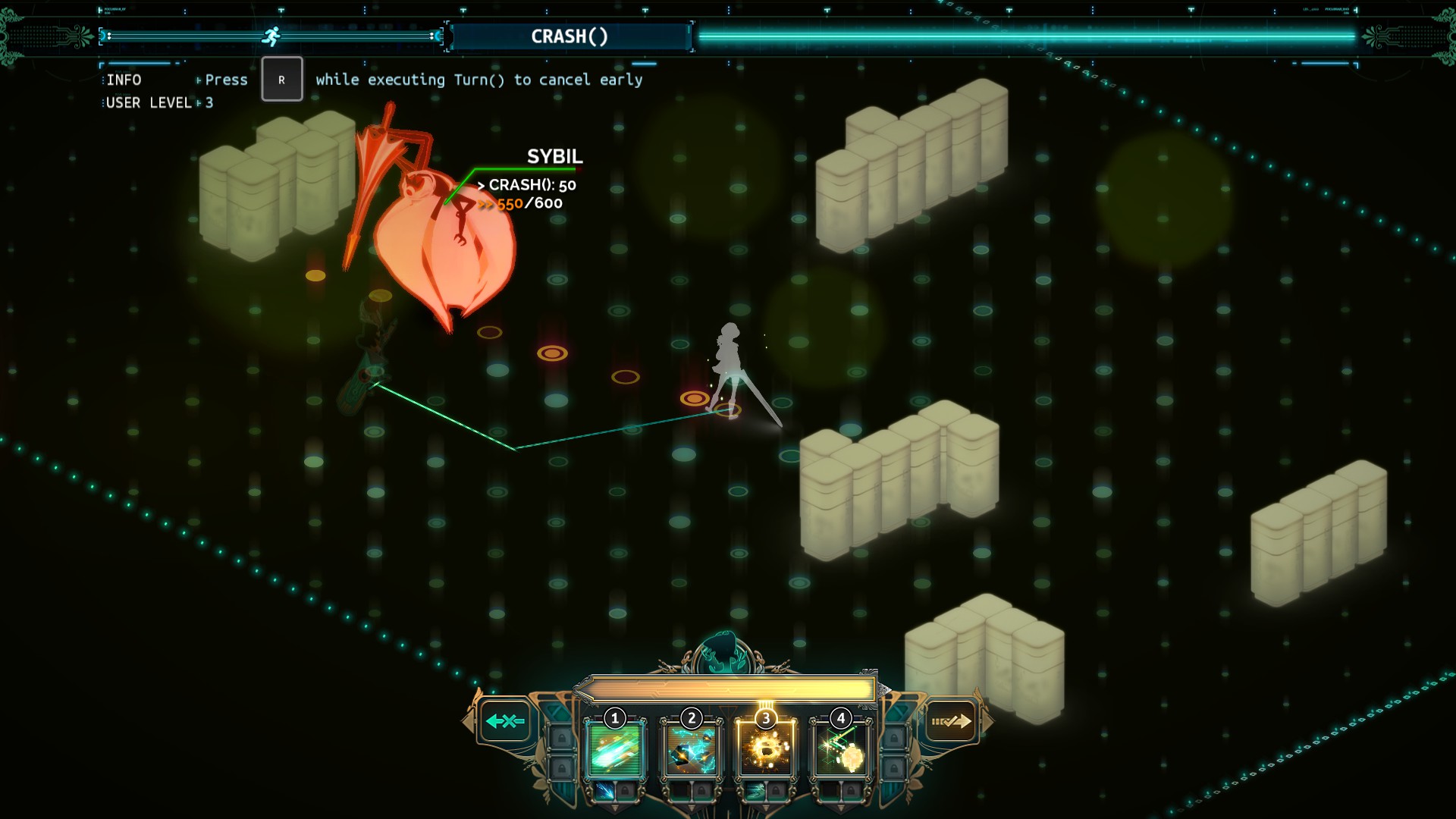
With each level, you can upgrade current skills or choose new ones. I wasn’t prepared for this, and chose “Jaunt,” although I didn’t really want to. When you reach checkpoints, you can rearrange your action bar. You may not have access to all your learned skills (depleted and on cooldown), which makes being able to rearrange them at checkpoints important. It works similarly to “Orcs Must Die” where you have a library of skills but can only use a set number of them over the course of an encounter.
Environment
The story isn’t fully fleshed out when you first launch the game, but Red’s history and the reason she’s on the run develop steadily as you progress through each encounter. If you like to explore your environment, the shady nature of Cloudbank, which poses as an efficient utopia, becomes evident, as well. You can choose the weather – except you can’t – read news, and participate in shallow polls about who the better singer in the city is. There’s also posters on the outside of buildings you run past which taunt Red and the loss of her voice in the initial attack. The progression of the story is perfectly timed, and the interaction between Red and her environment add a layer of depth. My heart hurt for Red, her destroyed talent, and the loss of the curious man who saved her.
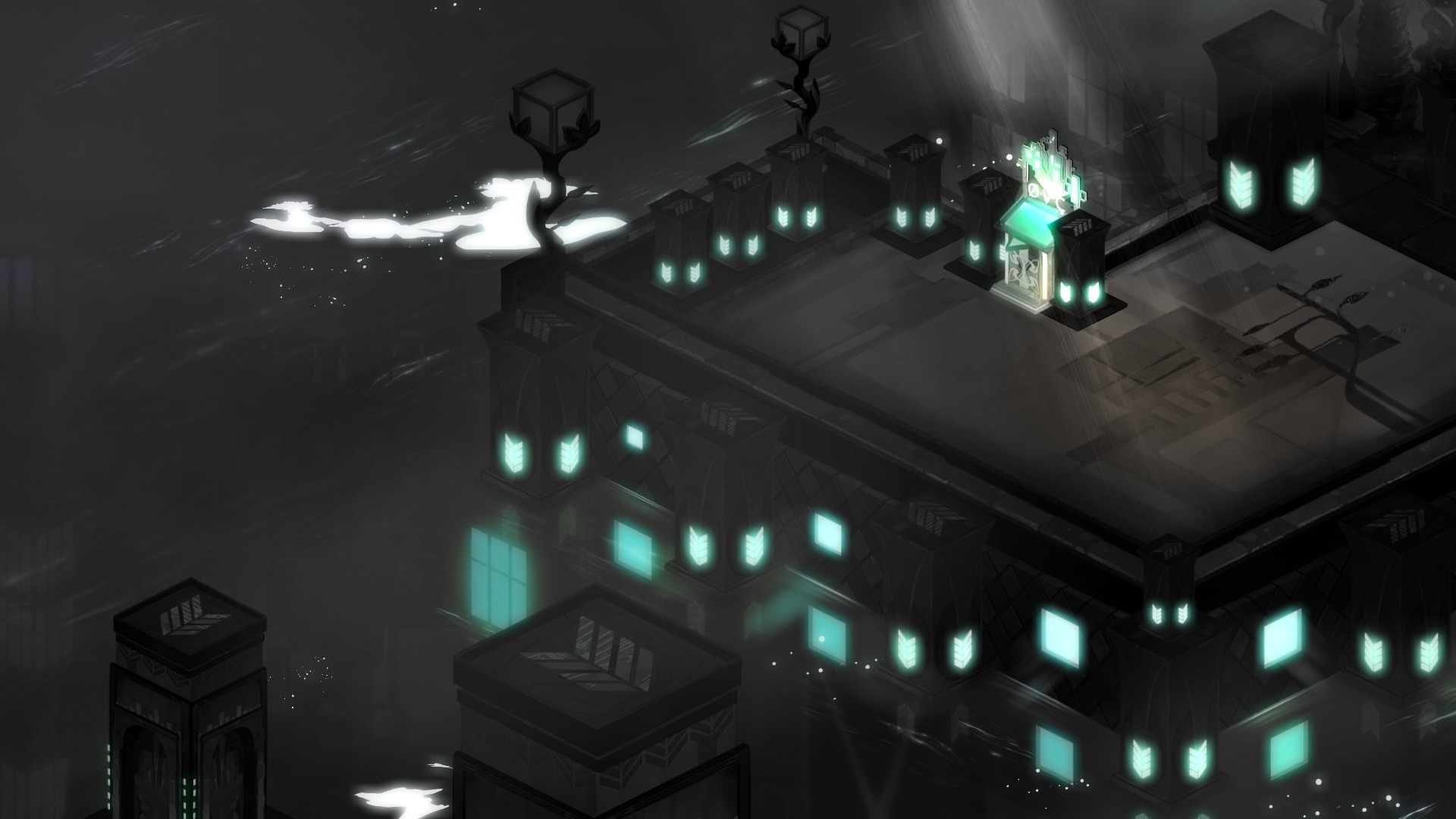
“Transistor” combines dark colors and dreamy imagery which contributed to the noir film feeling the game radiates. The artwork was incredible, particularly when it came to the background, but the characters were well designed, as well. Because the enemies, environment, and gameplay were all pretty original, the artists could have gone in many different directions. Using dreamlike, floaty backdrops with stylized characters was as good as I ever could have imaged. The graphics really contributed to the immersion in the storyline. However, I was not as much of a fan of the cut scene graphics, which were awkwardly executed, distracted me from the storyline, and destroyed any immersion I had built up over the course of the different encounters.
The biggest problem with the environment is that the map is incredibly linear. The designers created an incredible-looking world with rich context, and I wanted to explore it! However, if you deviate too far back from your current mission’s area, you’re told that there’s “nothing new here.” You also can’t enter any buildings, interact with posters, or things outside unless they explicitly move your character forward in the mission. That was the biggest disappointment in the game.
Soundtrack
The music – composed by Darren Korb who also worked on the “Bastion” soundtrack – is vital to mood, and the haunting pain of Red’s now-destroyed voice in the background of everything that you do is, well, painful. It doesn’t leave you. Korb’s score in “Transistor” is so dissimilar from “Bastion,” it also becomes clear from playing both games that he is an incredibly talented individual, and Supergiant is lucky to have him.
If Ayn Rand accompanied her novels with a soundtrack as darkly beautiful as “Transistor’s,” I probably would’ve cried over the beauty in “Atlas Shrugged,” too. (But of course she didn’t. And I didn’t.)
Final Words
I cried over this game. Don’t wait for this title to go on sale. “Transistor” is captivating visually and intellectually, and $20 is a bargain for the price spent on this masterpiece.






